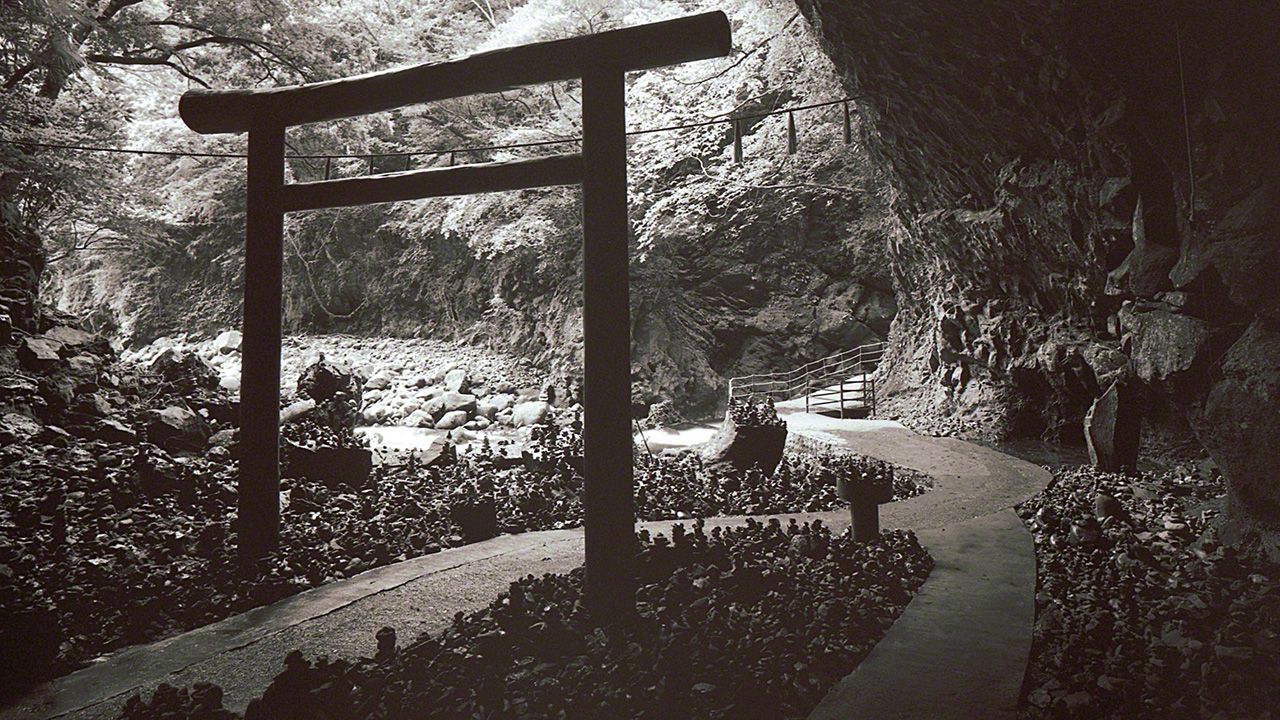
A Pilgrimage in Black and White
Amano Yasukawara: The Cave Where the Divinities Gathered
Guideto Japan
Images Travel Environment- English
- 日本語
- 简体字
- 繁體字
- Français
- Español
- العربية
- Русский
An Ancient Spirit of Prayer
In ancient times, Japanese people revered the phenomena of the natural world, paying respect, giving thanks, and offering prayers. They believed that the kami, beings with mysterious spiritual power, are to be found everywhere: in the mountains, in the seas, and even in the kitchens of people’s homes. This belief remains an important part of Japanese culture today. The kami bestow great blessings and peace—but when angered, they can also bring great misfortune.
Another term for the gods is marebito, or “visiting deities.” The idea was that the kami visited the earth at the invitation of human beings. People made offerings to encourage them to visit, and these rituals developed into festivals (matsuri), in which the numinous is welcomed into the everyday world. Once they had been brought to earth, the deities would take up residence in objects. These yorishiro (divine vessel or spirit receptacle) are physical objects or entities that serve as a vessel or medium for a kami (divine spirit) and can be anything from a tree or rock to a ceremonial object, allowing the kami to manifest in the material world. In the case of rocks, these sacred sites where the gods resided were known as iwakura or iwasaka.
The kami cannot be seen or touched. There is no human way to know what kind of beings they are. Nevertheless, the feelings of respect and awe for the kami, as beings that transcend the human, have been at the foundation of Japanese spiritual life since ancient times. Something of this is reflected in the famous comment by the twelfth-century Buddhist priest and waka poet Saigyō on his visit to the Ise Shrine: “What being is there, I do not know; and yet my tears flow with gratitude and awe.” The same spirit remains alive today. I resolved to make a pilgrimage to the special places that remain in modern Japan where the presence of the divine can still be felt.
The Setting for Myth
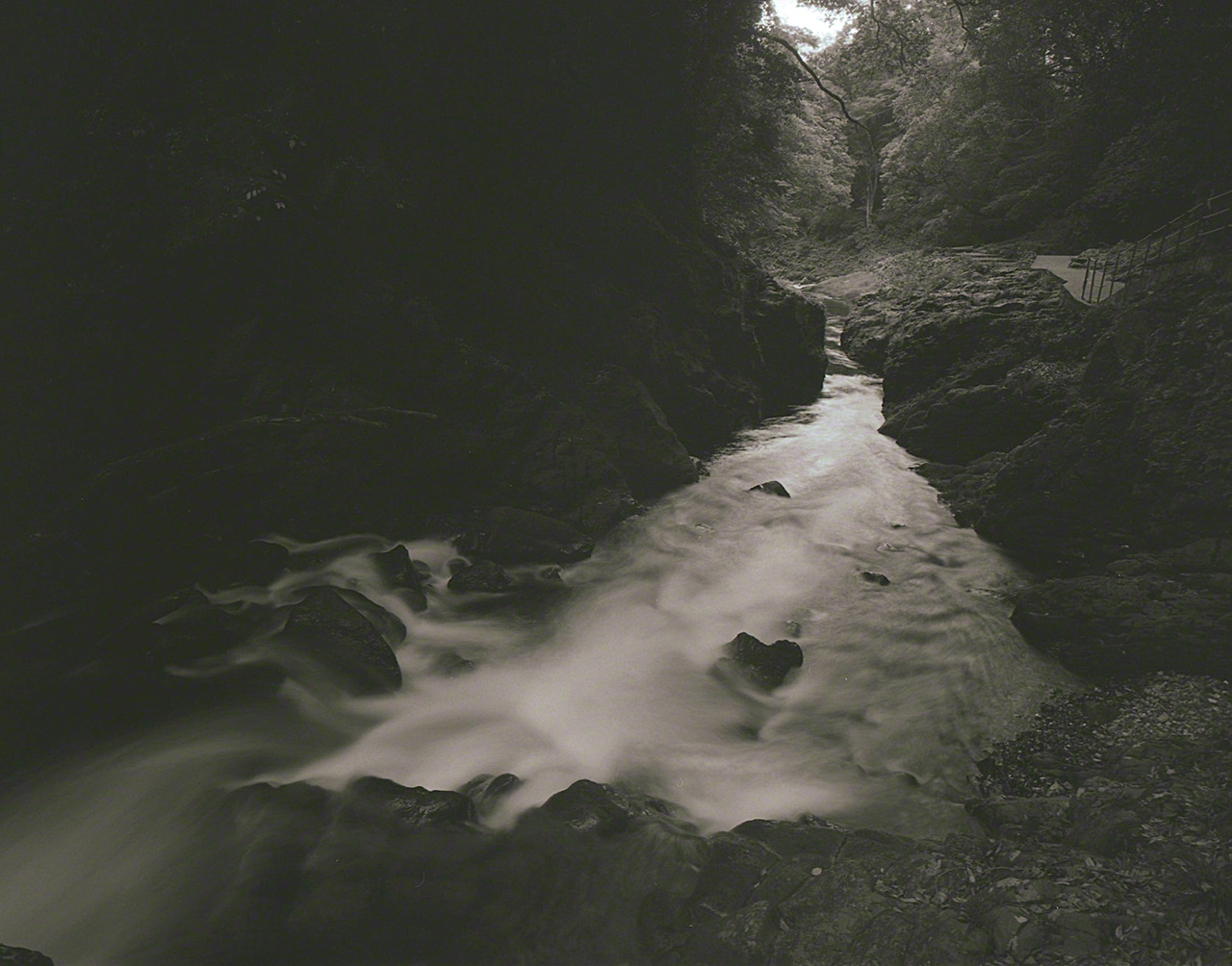
The stream that flows close by the Heavenly Cave. (© Ōsaka Hiroshi)
The Ama-no-Iwato (Heavenly Cave) appears in Japanese myth as the place where the sun goddess Amaterasu takes refuge from the wild antics of her younger brother, the unruly Susanoo. The absence of the sun goddess plunges the world into darkness. In consternation, the myriad gods (the eight million gods or yaoyorozu no kami) gather at the Ama-no-Iwato for a divine deliberation. Omohikane proposes a solution: let the cockerel crow for dawn, and let the gods engage in dancing and merrymaking to lure Amaterasu from her hiding place.
The setting in which the myth takes place is the land of the gods, known as the plain of heaven or Takama-no-Hara, though some versions place the setting for the events on earth. One place that has a long historical claim to have been the site of the events described in the myth is the Amano Iwato Shrine, in Miyazaki Prefecture in southeastern Kyūshū.
We set out for the Amano Iwato Shrine from our hotel before sunrise. No sound of a rooster crowing for dawn can be heard. After a while, the mountains of Takachiho emerge in a line beyond the expanse of rice fields, looming out of the predawn darkness like a black fence. A large lenticular cloud floats above the peak of the highest mountain, reminding me of the cap of a mushroom. What to make of this slightly unsettling omen? This eerie and mysterious sight makes me feel that we are truly entering the mythical land of the gods.
The Nishi Hongū (West Shrine) from which Ama-no-Iwato can be observed (it is not possible to enter this cave where Amaterasu hid herself away) is still enveloped in the crisp cool clean air of early morning. We pass through the shrine precincts and down a small path along the thundering Iwatogawa river. Cavernous cliffs crowd both banks as dawn breaks and the morning sun begins to illumine the thin strip of sky above our heads, barely wider than the breadth of the river.
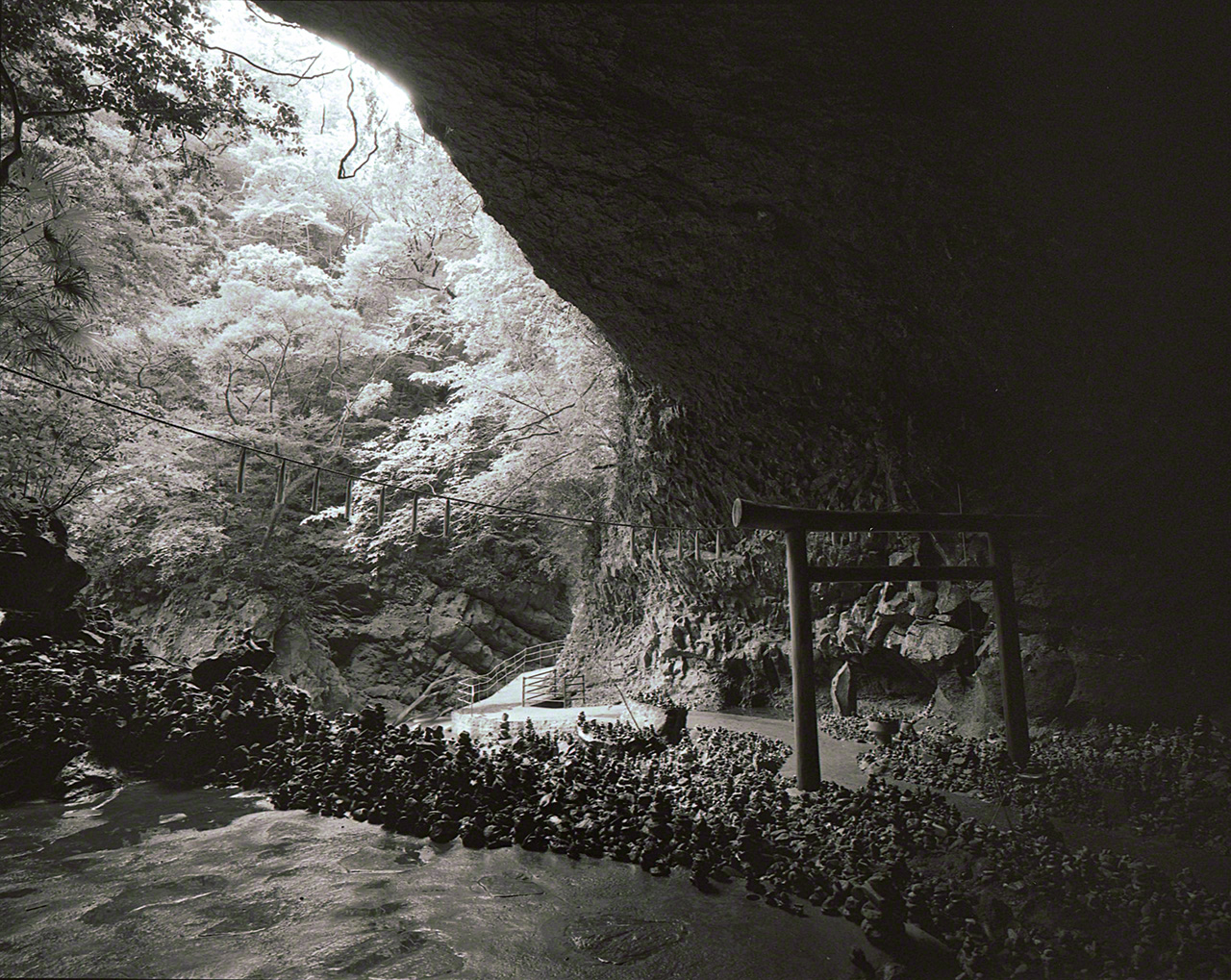
Amano Yasukawara (© Ōsaka Hiroshi)
After around ten minutes, the path comes to an end and the Amano Yasukawara reveals itself like an apparition—a large round cave that seems to have been carved out of the cliff. A torii stands at the entrance to the cave, beyond which is a simple shrine (yashiro), dedicated to Omohikane and the myriad gods said to have discussed here how to lure Amaterasu out.
The interior of the cave is a breathtaking sight: countless small stones piled like cairns, left behind by the people who have visited this special place with their hopes and prayers. Today, not just the shrine but the entire cave has become an object of reverence and prayer. From inside, the piles of stones take on the appearance of the myriad gods themselves, bathed in the heavenly light and the droplets of water that drip softly from the roof of the cave.
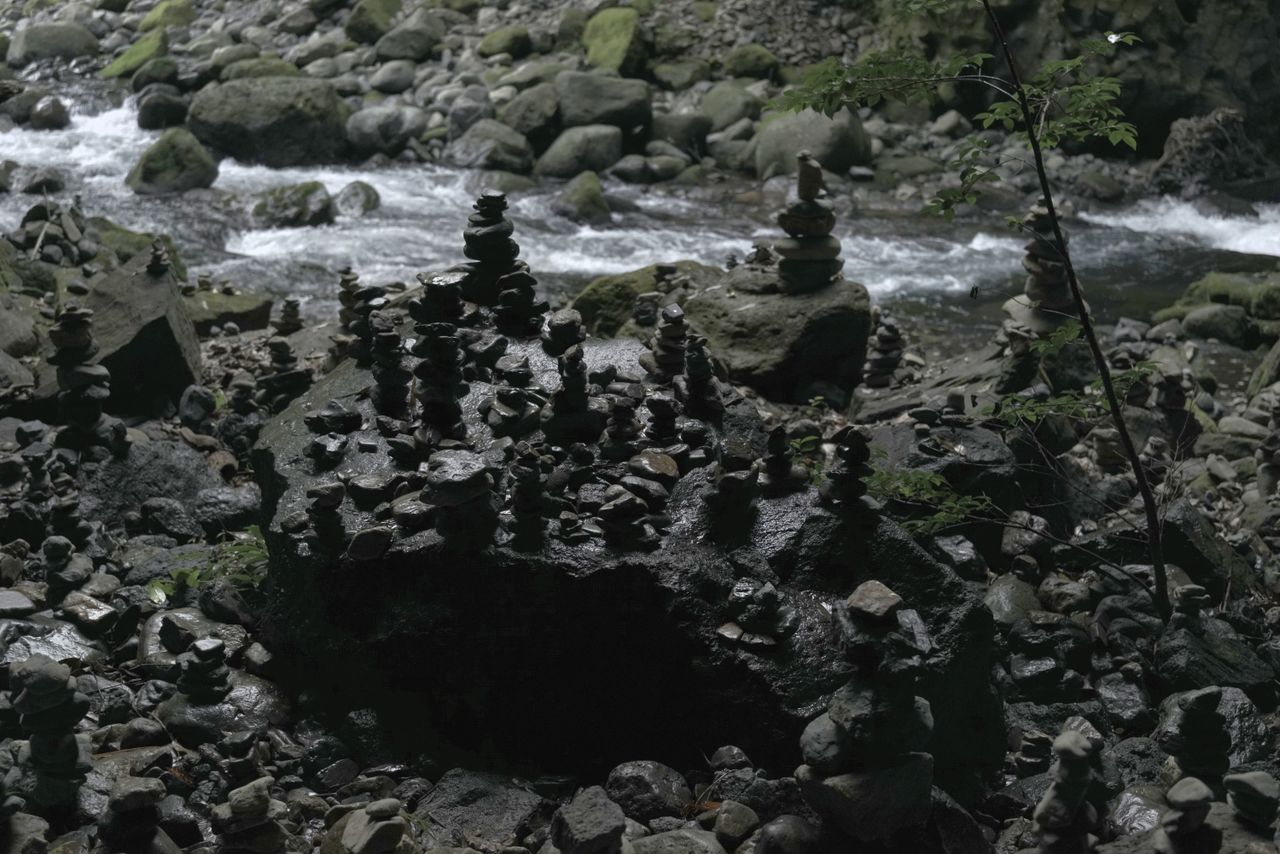
Piles of stones fill the interior of the cave. (© Ōsaka Hiroshi)
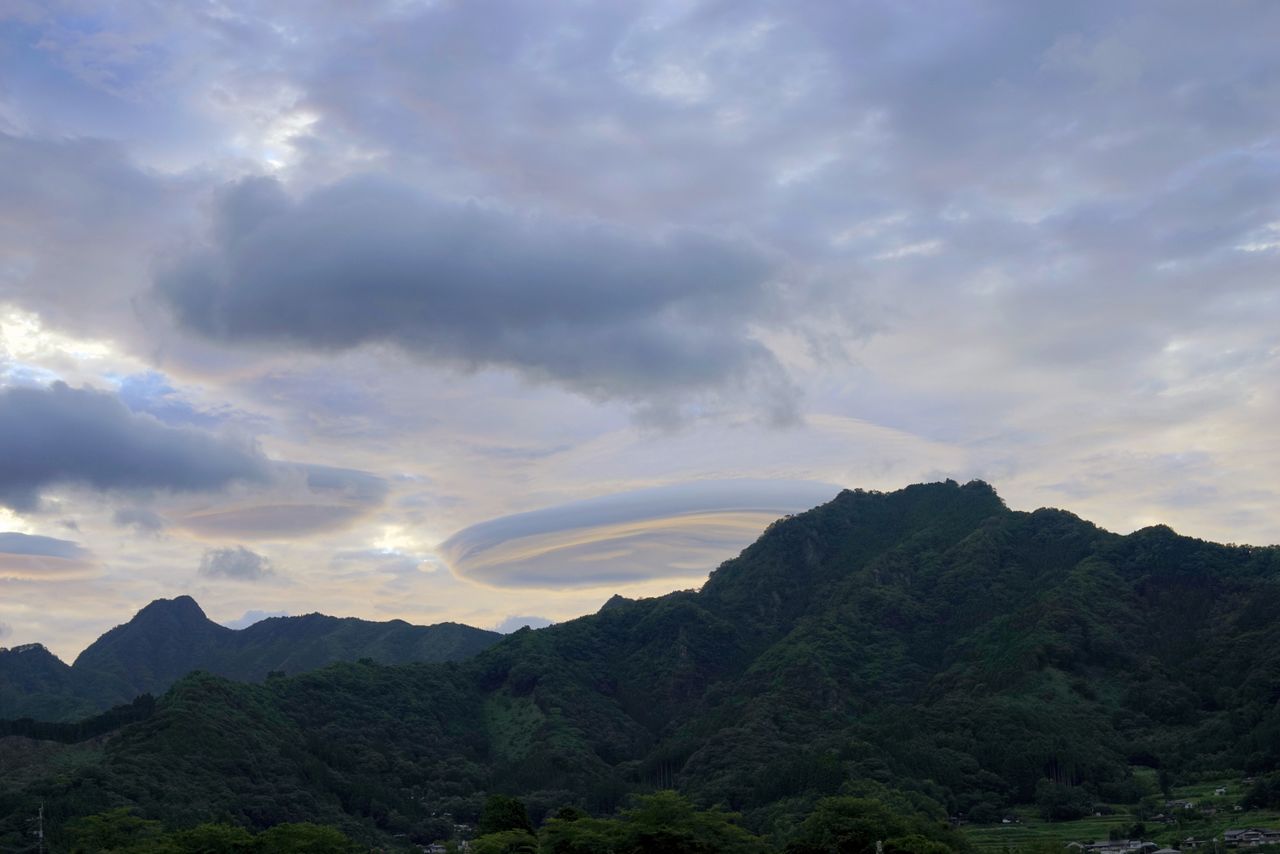
A lenticular cloud hovers over the mountains of Takachiho. (© Ōsaka Hiroshi)
Amano Yasukawara
- Sacred to: Omoikane-no-kami and the myriad deities (yaoyorozu no kami)
- Location: Takachiho, Miyazaki Prefecture
The cave is located on the precincts of the Ama-no-Iwato Shrine, and has become popular in recent years as a “power spot” thanks to its associations with the gathering place of the gods. The precise date of the shrine’s foundation is unknown, but the cave has been sacred to Amaterasu the sun goddess since ancient times.
(Originally published in Japanese. Text and editing by Kitazaki Jirō. Banner photo © Ōsaka Hiroshi.)

